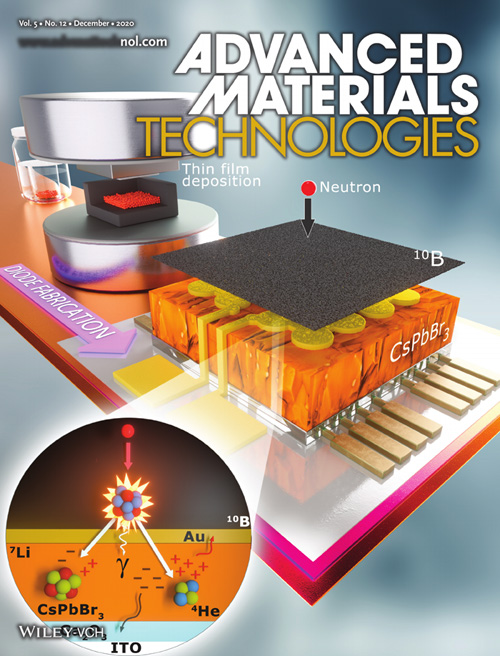
University of Texas at Dallas researchers have developed a cheaper and more accurate portable technology to detect neutron radiation, which can indicate the presence of materials used for weapons of mass destruction (WMD). The technology can also be used in radiation therapy.
Manufacturing costs for the new material is 100 to 1,000 times less expensive than current radiation detectors. The technology is based on a thin film that allows for smaller, lighter and efficient sensors. By making these neutron sensors more affordable, they can be used in new ways, such as in networks in airports or in tunnels leading into a large city to detect smuggled special nuclear material, which is radioactive material that can be used to make WMD, said Dr. Manuel Quevedo-Lopez, professor and department head of materials science and engineering (MSE) in the Erik Jonsson School of Engineering and Computer Science.
“The goal is to make it nearly impossible to move special nuclear materials without being detected,” Quevedo-Lopez said. “For example, if there’s a car loaded with radioactive material, you could detect it and actively track the vehicle motion.”
The discovery is the result of several years of research funded by the Air Force Office of Scientific Research, the Department of Homeland Security, the National Science Foundation and Texas Instruments Inc.
“The goal is to make it nearly impossible to move special nuclear materials without being detected. For example, if there’s a car loaded with radioactive material, you could detect it and actively track the vehicle motion.”
Dr. Manuel Quevedo-Lopez, professor and department head of materials science and engineering in the Erik Jonsson School of Engineering and Computer Science
Quevedo-Lopez has been awarded six patents related to the technology, and he and researchers in his Flexible and Large Area Nanoelectronics (FLAN) laboratory published several recent studies on this work, including one published online March 12 in ACS Applied Electronic Materials and another Dec. 9, 2020, in the print edition of Advanced Materials Technologies that demonstrated that the technology can detect neutrons.

Current portable radiation detectors are fragile, bulky and expensive. The UT Dallas researchers’ patented technology involves a thin film based on perovskite materials. The film measures as thin as 8 micrometers, the size of a strand of spider silk.
Radiation from neutrons is one of the most difficult types of radiation to detect because neutrons have no electrical charge, Quevedo-Lopez said.
Smaller, lighter and less-expensive neutron radiation detectors have a range of potential applications that go beyond national security, for instance, in health and consumer protection applications. Quevedo-Lopez said the devices could detect radioactive waste material from oil and gas drilling, which can come from drilling through rocks that contain natural radioactivity. It also could measure radiation exposure in hospital settings and detect radiation in contaminated scrap metal.
The technology will be tested at five airports in Mexico, Quevedo-Lopez said. The locations are currently being finalized.
At the Speed of Bright
UT Dallas has earned a reputation for incredibly bright students, innovative programs, renowned faculty, dedicated staff, engaged alumni and research that matters. Read stories about more of the University’s bright stars.
Quevedo-Lopez’s research team includes current and former students and postdoctoral researchers. Co-authors of the ACS Applied Electronic Materials and Advanced Materials Technologies studies include FLAN lab postdoctoral researchers Dr. Martin Gregorio Reyes-Banda and Dr. Leunam Fernández-Izquierdo; MSE researchers Siddartha Srinivasan Nandagopala Krishnan PhD’20 and Dr. Jesus Alfonso Caraveo-Frescas; and Dr. Xavier Mathew, former visiting research scientist and professor at the Institute of Renewable Energy (IRE) at the National Autonomous University of Mexico (UNAM).
Additional researchers on the Advanced Materials Technologies study include Dr. Iker Rodrigo Chavez-Urbiola, former postdoctoral researcher now at the Center for Engineering and Industrial Development in Mexico; Lidia El Bouanani PhD’20, a research scientist and engineer at Qorvo Inc.; Joseph Chang PhD’20; Dr. Carlos Avila-Avendano, an MSE research assistant; Nini Rose Mathews, former visiting research scientist and professor at IRE at UNAM; and Maria Isabel Pintor-Monroy PhD’19, now at Interuniversity Microelectronics Centre (IMEC) in Belgium.
